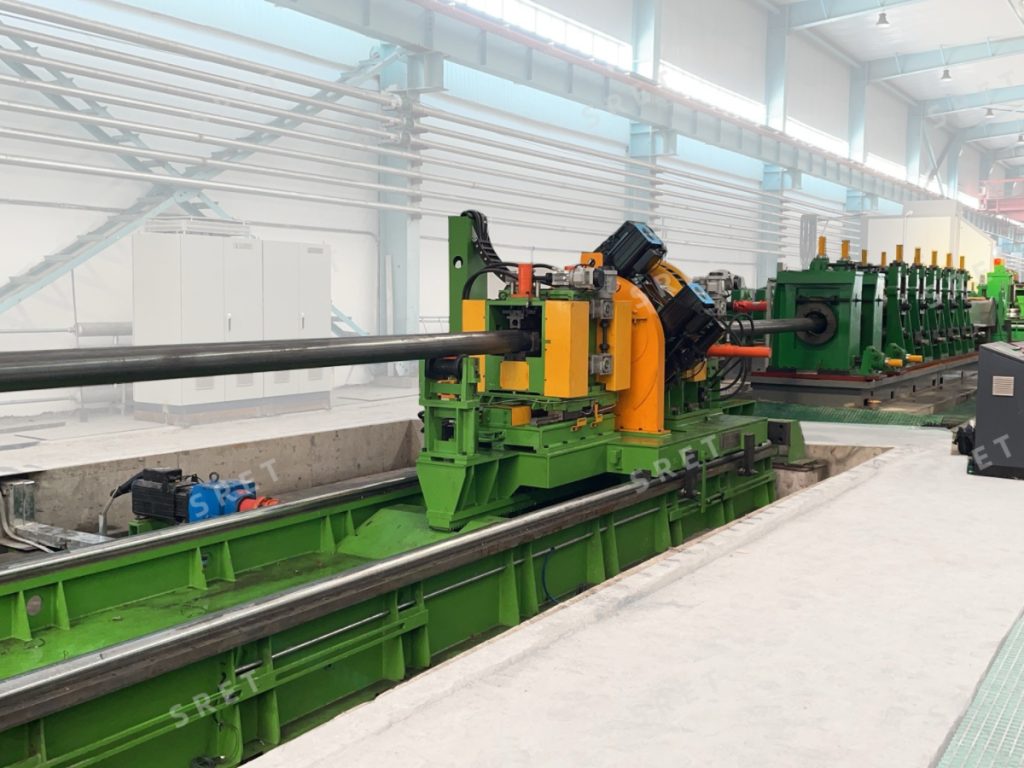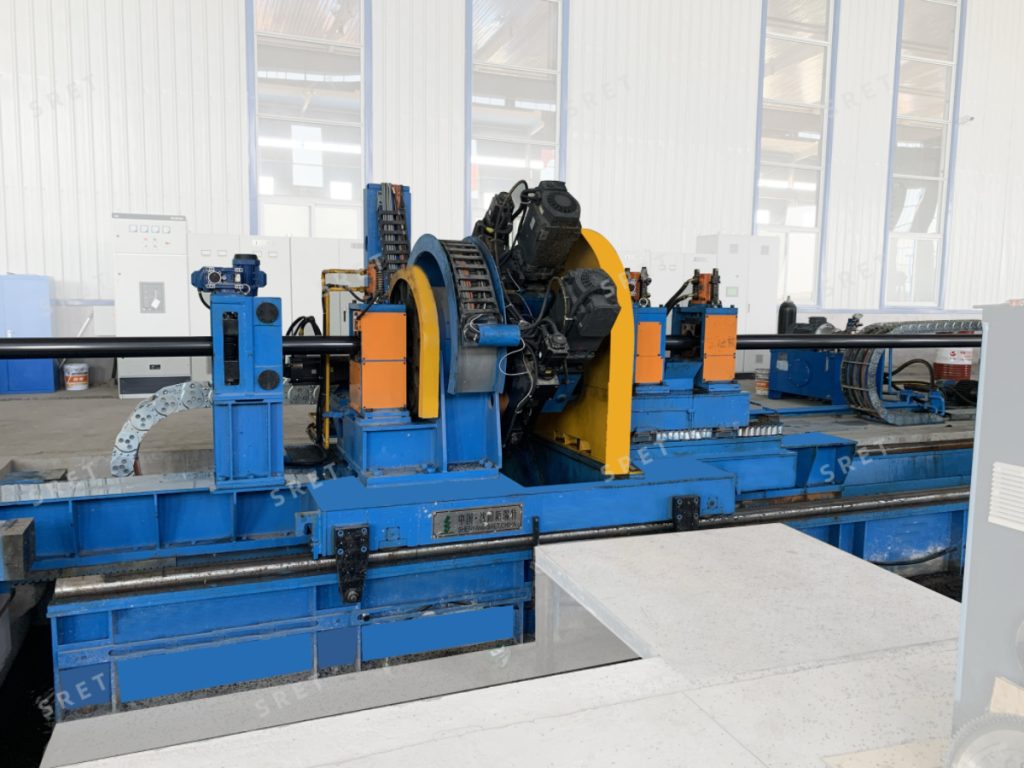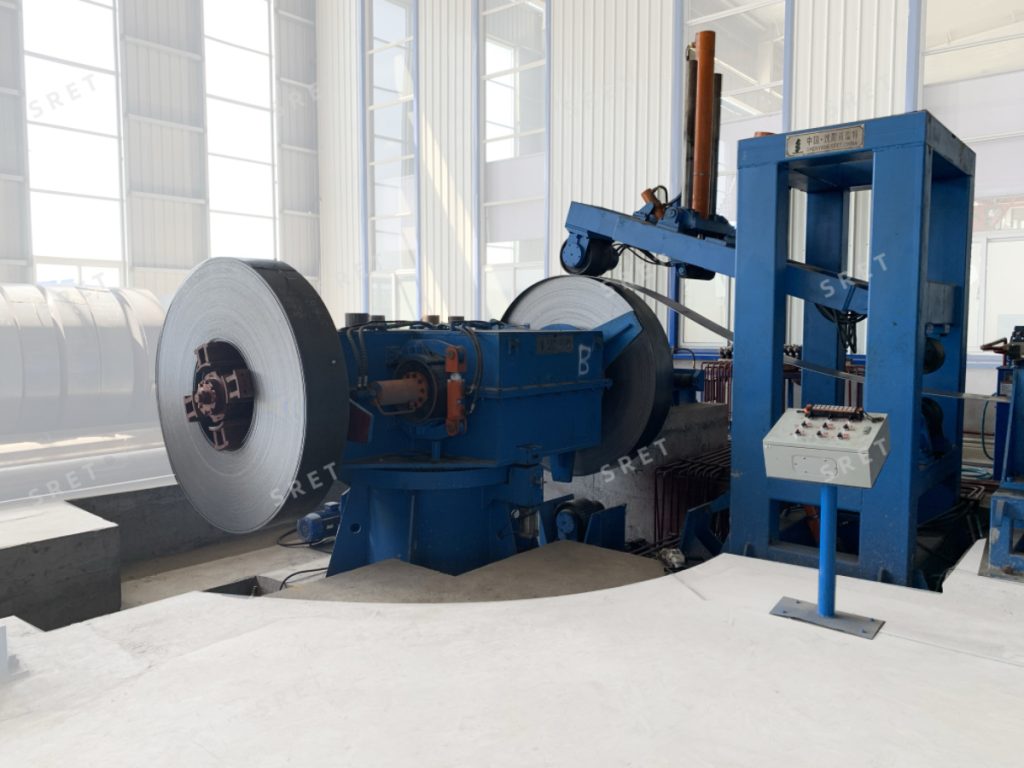
Modern steel pipe manufacturing has evolved significantly with the advancement of electric resistance welding technology. An ERW tube mill line represents the pinnacle of efficient welded pipe production, combining precision engineering with high speed manufacturing capabilities. These sophisticated production systems transform raw materials into finished steel pipes that serve various industries worldwide, from construction to automotive applications.
The global demand for high-quality steel pipes continues to grow across multiple sectors, driven by infrastructure development, energy projects, and manufacturing expansion. Understanding how an ERW tube mill line operates, its components, and capabilities is crucial for manufacturers considering investment in welded pipe production technology.
This comprehensive guide explores everything you need to know about ERW tube mill lines, from basic concepts to detailed technical specifications, helping you make informed decisions about implementing this technology in your manufacturing operation.

An Electric Resistance Welding tube mill line uses high frequency welding technology to produce longitudinally welded steel pipes through a continuous manufacturing process. This complete set of equipment transforms steel coil into finished welded tubes by forming the material into the desired shape and creating a permanent weld seam along the length of the pipe.
The fundamental principle behind electric resistance welding involves passing high frequency current through the edges of formed steel strip, generating localized heat that enables the edges to fuse together without additional filler material. This process creates a strong, consistent weld seam that meets stringent quality standards required by various industries.
A complete ERW tube mill line is capable of producing round, square, and rectangular welded pipes for various industrial applications. The versatility of these production systems allows manufacturers to serve multiple market segments with a single investment, maximizing return on capital while meeting diverse customer requirements.
The high frequency current creates precise welds along steel strip edges, ensuring consistent joint quality throughout the production run. Modern tube mills incorporate advanced control systems that monitor and adjust welding parameters in real-time, maintaining optimal weld characteristics regardless of material variations or production speed changes.
The heart of any ERW tube mill begins with the uncoiling system, typically featuring a double-arm uncoiler designed for handling steel coils up to 12 meters in length. This component ensures smooth, continuous feeding of raw materials into the production line while minimizing material waste and production interruptions.
The high frequency induction welding unit represents the core technology of the mill line, operating at speeds up to 120m/min for efficient production. These welding systems utilize precise frequency control to generate the optimal heat pattern for different material thicknesses and grades, ensuring consistent weld quality across the entire product range.

Forming roll sets are specifically designed for particular pipe diameters, featuring both fixed and replaceable tooling systems that allow quick changeovers between different product sizes. These forming rolls gradually shape the flat steel strip into the desired pipe geometry while maintaining precise edge alignment essential for quality welding.
The sizing and straightening equipment ensures dimensional accuracy within 0.5/100 error tolerance, meeting the tight specifications required by demanding applications such as automotive and construction industries. This equipment corrects any dimensional variations that may occur during the forming and welding processes.
A flying saw cutting system provides precise pipe length control from 6m to 12m, accommodating various customer requirements while maintaining high productivity. The cutting system operates in sync with the mill line production speed, ensuring clean cuts without interrupting the continuous production flow.
Additional components include:
Modern ERW tube mill lines offer impressive flexibility in terms of product range and production capabilities. The pipe diameter range typically spans from 4mm to 720mm OD with wall thickness capabilities from 0.2mm to 22mm, enabling manufacturers to serve diverse market segments from precision tubing to structural applications.
For square and rectangular tube production, these mill lines can produce sizes from 6x6mm to 600x600mm with thickness ranging from 0.3mm to 22mm. This capability makes them particularly attractive for manufacturers serving the construction, furniture, and automotive industries where rectangular pipes are commonly specified.
| Specification | Range | Application |
|---|---|---|
| Round pipe diameter | 4mm – 720mm OD | General piping, structural |
| Wall thickness | 0.2mm – 22mm | Light to heavy duty |
| Square/rectangular | 6x6mm – 600x600mm | Construction, furniture |
| Production speed | 20m/min – 120m/min | Variable by size |
| Annual capacity | 10,000 – 180,000 tons | Scalable production |
Production speeds range from 20m/min to 120m/min depending on pipe size and wall thickness, with larger diameter pipes generally requiring slower speeds to maintain quality standards. This variable speed capability allows operators to optimize production efficiency while ensuring consistent product quality.
Annual production capacity varies from 10,000 to 180,000 tons based on line configuration and the specific mix of products manufactured. This wide range accommodates everything from specialized, low-volume applications to high-volume commodity pipe production.
The equipment is compatible with carbon steel, alloy steel, and API5L X42-X80 grade materials, making it suitable for oil and gas applications where material certification and traceability are critical requirements. Advanced mill lines can handle various steel grades without extensive setup changes, improving operational flexibility.

The ERW tube mill line production process begins with steel coil loading and unwinding through an automated uncoiling system. The machine works stably throughout this initial stage, ensuring consistent material feed rates that support high production efficiency throughout the entire operation.
Strip end preparation includes shearing, cutting, and welding operations that enable continuous operation by joining the tail end of one coil to the head end of the next. This process minimizes downtime and material waste while maintaining production flow, contributing significantly to overall operational efficiency.
Progressive forming occurs through multiple roll stands that gradually shape the flat steel strip into the desired pipe geometry. The forming rolls apply controlled pressure at specific angles, ensuring proper edge alignment while avoiding material stress that could affect final pipe quality.
High frequency induction welding takes place at the formed seam with precise heat control managed by advanced electronic systems. The welding process operates at specific frequencies optimized for the material thickness and pipe diameter being produced, ensuring consistent weld penetration and strength.
The production workflow includes these critical steps:
External and internal burr removal follows the welding operation, creating smooth internal and external surfaces essential for many applications. Water cooling systems then stabilize the material temperature and metallurgical properties before final sizing operations.
Final sizing, straightening, length cutting, and quality inspection occur before packaging. Modern tube mills integrate these operations seamlessly, maintaining high speed production while ensuring each pipe meets specified dimensional and quality requirements.
The oil and gas industry represents one of the largest markets for ERW pipes, utilizing them in pipeline construction and transmission applications where reliability and cost-effectiveness are paramount. These applications often require pipes meeting API specifications, demanding consistent quality and documented material traceability.
Construction sector applications include structural tubing, scaffolding, and building frameworks where the combination of strength, dimensional accuracy, and cost-effectiveness makes ERW pipes an ideal choice. The ability to produce both round pipe and rectangular pipes from a single mill line provides significant advantages for construction industry suppliers.

The automotive industry relies heavily on ERW tubes for chassis components, exhaust systems, and various structural parts. The high precision capabilities of modern tube mills meet the demanding tolerance requirements of automotive manufacturers while providing the high speed production necessary to support just-in-time delivery schedules.
Water engineering projects, including municipal water supply and drainage systems, benefit from the corrosion resistance and dimensional consistency achievable with ERW pipe production. The ability to produce large diameter pipes efficiently makes these mill lines particularly suitable for infrastructure projects.
Chemical and petrochemical plants utilize ERW pipes for process piping and equipment fabrication applications where material certification and quality consistency are critical. The flexibility to handle various steel grades, including alloy materials, makes these mill lines valuable for serving the chemical industry.
Agricultural machinery and equipment manufacturing represents another significant application area where the combination of strength, formability, and cost-effectiveness drives specification of ERW pipes. The ability to produce both standard and custom sizes supports the diverse requirements of agricultural equipment manufacturers.
Additional applications span numerous industries:
High production efficiency stands as the primary advantage of modern ERW tube mill lines, with continuous operation capabilities and minimal downtime contributing to excellent overall equipment effectiveness. The combination of high speed welding and automated material handling enables these systems to achieve production rates that significantly exceed alternative manufacturing methods.
Consistent weld quality through automated high frequency welding control ensures that every pipe meets specified strength and integrity requirements. Advanced welding control systems monitor key parameters continuously, making real-time adjustments that maintain optimal weld characteristics throughout production runs.
Low material wastage represents a significant economic advantage, with typical scrap rates of only 1-2% compared to higher waste levels associated with alternative production methods. This efficiency reduces overall production costs by 5-10% while supporting environmental sustainability objectives.
Flexible sizing capabilities allow quick changeovers between different pipe dimensions, enabling manufacturers to respond rapidly to market demands while maintaining efficient production schedules. Modern tube mills can typically complete size changes in 2-4 hours, depending on the complexity of the changeover.

Energy efficient operation through optimized power consumption for welding processes contributes to lower operating costs while reducing environmental impact. High frequency welding systems concentrate energy precisely at the weld zone, minimizing overall power requirements compared to alternative welding methods.
Precise dimensional control ensures tight tolerances essential for critical applications, particularly in automotive and precision engineering sectors. The combination of advanced forming technology and real-time measurement systems enables these mill lines to consistently achieve dimensional accuracy that meets the most demanding specifications.
Key operational advantages include:
Factory space requirements typically demand approximately 300m x 30m for complete production line installation, including material handling areas, quality control stations, and finished goods storage. Proper facility planning must account for overhead crane access, utility connections, and future expansion possibilities.
Initial investment encompasses equipment costs, foundation work, and utility connections that can vary significantly based on line capacity and automation level. A complete ERW tube mill line represents a substantial capital investment, requiring careful analysis of market demand and return on investment projections.
Operational costs include electricity consumption, raw materials, and maintenance expenses that directly impact production economics. Energy costs for high frequency welding typically represent 15-20% of total operational expenses, making energy efficiency a critical selection criterion.
Market demand analysis for target pipe sizes and annual volume requirements forms the foundation of any investment decision. Understanding regional market dynamics, competitive positioning, and growth projections enables informed equipment sizing and capability selection.
Supplier evaluation should encompass technical expertise, installation support, and comprehensive after sales service capabilities. The complexity of modern tube mill technology requires suppliers with proven experience in commissioning, training, and ongoing technical support.
Critical evaluation criteria include:
Quality control systems for material verification, dimensional checking, and weld integrity testing require significant planning and investment. Modern installations typically integrate automated testing equipment that provides real-time quality monitoring and statistical process control data.
The selection process should involve detailed analysis of total cost of ownership, including initial investment, operational costs, maintenance requirements, and expected service life. Experienced engineers recommend involving key operational personnel in supplier evaluations to ensure selected equipment matches organizational capabilities and requirements.
Successful implementation requires comprehensive planning that addresses technical specifications, facility requirements, operator training, and ongoing support needs. The complexity of modern tube mill technology demands careful project management throughout the installation and commissioning process.

Manufacturing success with ERW tube mill lines depends heavily on selecting equipment that matches specific customer requirements while providing flexibility for future market changes. The most successful installations combine proven technology with comprehensive supplier support, ensuring reliable production and consistent quality throughout the equipment service life.
Investment in a complete ERW tube mill line represents a significant commitment that can provide decades of reliable service when properly planned and implemented. The combination of high production efficiency, consistent quality, and operational flexibility makes these systems attractive for manufacturers serving diverse markets with steel pipe requirements.
The decision to invest in ERW tube mill technology should align with long-term business strategy, market positioning, and growth objectives. With proper planning and supplier selection, these production systems offer excellent potential for profitable operation across multiple industry sectors requiring high-quality welded pipe products.
